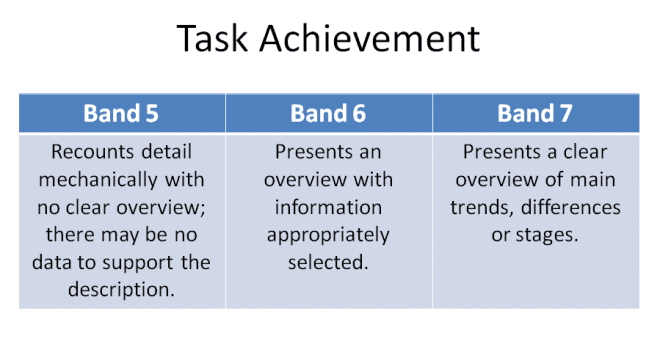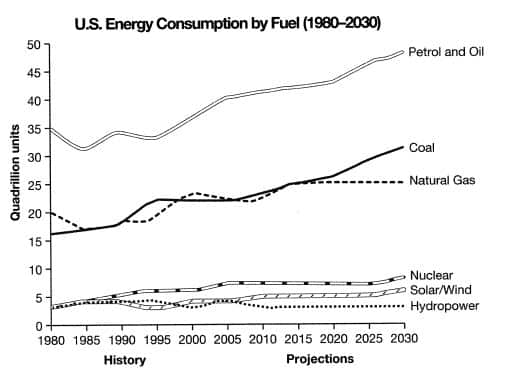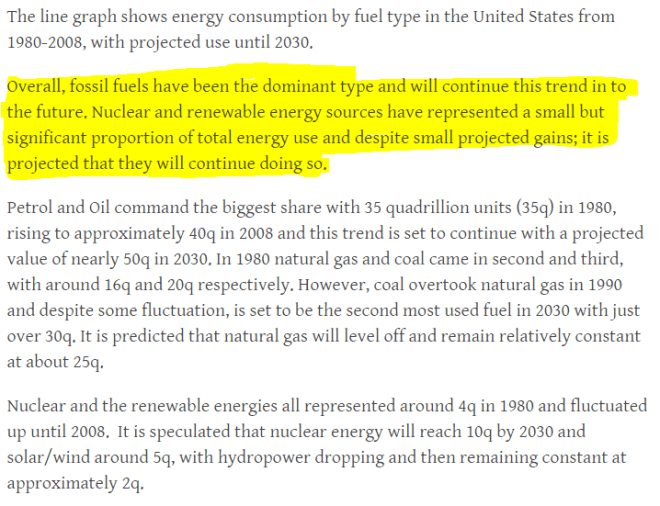The overview is probably the most important paragraph in the whole essay. In fact, as we will see later in this post, it is very difficult to score 7 or above without a good one.
An overview is simply a summary of the main or most important points in a graph, chart, process or map. It is normally 2-3 sentences long and should be the second paragraph you write in your essay. As we will see below, it also influences what you write in the rest of your essay.
Learn how to write a good one, and you are much more likely to get a high score.
What does the examiner want?
An overview is one of the first things an examiner looks for because it shows them that you can identify the most important information from the graph or chart and clearly identify overall trends and comparisons.
If we look at the official marking scheme, we can see that the word ‘overview’ is mentioned three times:

This means that to get at least a 5 for task achievement we must give some kind of overview. If we do not give any overview, we will always get below a 5. If we select the appropriate data to include in our overview, we get a score of 6, and if it is ‘clear’ we get a 7 for this part of the exam.
If you know how to select the appropriate data and practice writing a clear overview, you will likely get the score you deserve in this section.
What is an overview?
To understand this, we must look at the question. The question for academic task one is always the same:
Summarise the information by selecting and reporting the main features, and make comparisons where relevant.
We, therefore, need to provide a short summary of the main features. You do this in the overview paragraph by picking out 3-4 of the most significant things you can see and writing them in general terms. By general, I mean you do not support anything you see with data from the graph or chart, write about what you can see visually.
How do I select the correct features?
To understand this, we have to think about the different types of graphs and charts we might see. There are generally two different kinds of charts and graphs: dynamic and static.
Dynamic charts show data over time, and static charts show data at just one point in time. This will affect the type of data we select.
When we are looking at dynamic graphs, we should be looking out for:
- What does the data do from the start to the finish?
- Do they generally go up or down, or do they fluctuate?
- Any significant difference from the general trend?
- Overall increase/decrease?
- Peaks/lows?
When we look at static graphs, we should be looking for:
- What are the highest/lowest values?
- What are the most noticeable differences?
- Any similarities?
- Any significant exceptions?
Is there any special grammar?
You should try and make a complex sentence by making a subordinate clause. Complex sentences are sentences with more than one clause, which help increase our marks in the grammatical range part of the marking criteria.
You can easily make a subordinate clause structure in the overview by joining two pieces of information with the words ‘while’. ‘although’, ‘with’, ‘even though’, ‘whereas’ or ‘and’. However, make sure you know the meaning of these words and how they are correctly used in a sentence.
How does an overview fit into the rest of my essay?
The overview should be the second paragraph of a four-paragraph structure:
Paragraph 1- Paraphrase Sentence
Paragraph 2- Overview
Paragraph 3- Details
Paragraph 4- Details
I tell my students to write the overview before the details because it clarifies to the examiner that they have identified the main features and helps them write the details paragraph. In the details paragraphs, you will take the statements you made in the overview and support them with data.
Shouldn’t I write a conclusion?
No. Conclusions are really a summary of what you think or opinions. This is not an opinion essay, and you do not need to write a conclusion. Save your conclusions for task 2.
Example
Below is one final example following the structure I used above. I have highlighted the overview in yellow.
Notice how I have picked out the most significant/noticeable/important features and talked about them very generally in the overview. I have not used any data in the overview. However, I have taken the features from the overview and supported them with data in paragraphs 3 and 4.
Source: Cambridge English IELTS Past Papers.
Next Steps
I hope you found this post useful! Please let me know in the comments section below if you have any questions.
Alternatively, always feel free to email us here: chris@ieltsadvantage.com.
You may also find my grammar guide for IELTS task 1 useful. It has lots of phrases to help you describe data.
For more help with IELTS Writing Task 1, check out my video lesson below:


